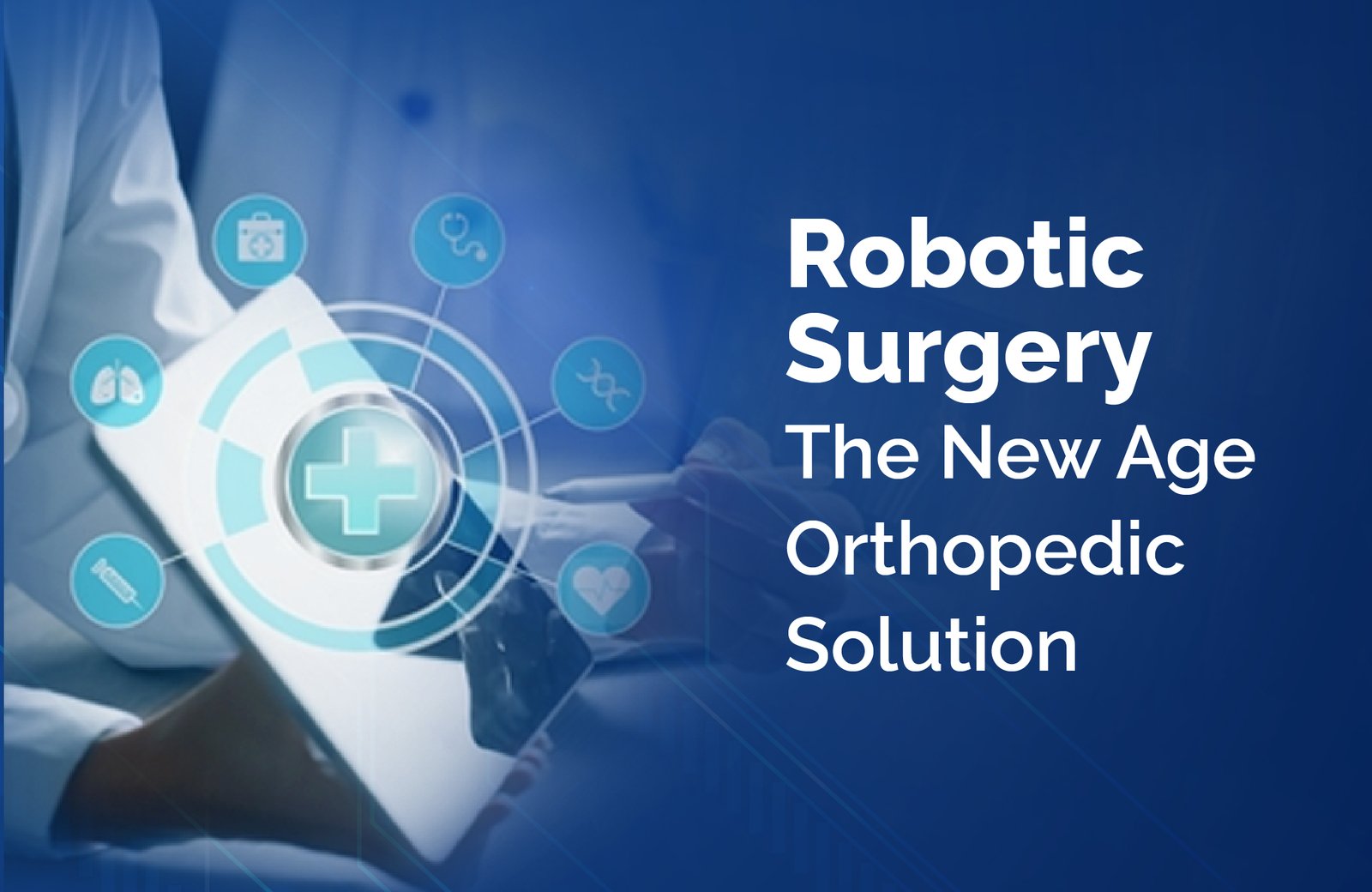In the field of orthopedic surgery, precision and innovation coming from the surgeon’s side are inevitable. Every orthopedic procedure and every placement of an implant carries immense significance in the journey of the patient toward recovery and restored mobility. Over the years, technology has advanced itself, reshaping the landscape of orthopedic surgery worldwide.
Among these advancements, robotic surgery stand out as a beacon of hope, promising ultimate accuracy, efficiency, surgical ease, and postoperative patient outcomes. There is no doubt in the fact that medical science has evolved thoroughly and robotic surgery is nonetheless an extraordinary game-changer in the said arena.
 What is Robotic Surgery?
What is Robotic Surgery?
Robotic surgery, also called robot-assisted surgery, is a surgical technique that utilizes robotic systems to aid surgeons in performing procedures with enhanced surgical precision, flexibility, and control. During robotic surgery, the surgeon sits back on the surgical console and operates the hand and foot controls to guide the robotic arms, which are inserted into the patient’s body through small incisions. The robotic system provides magnified, high-definition 3D images of the surgical site, giving the surgeons improved clarity while performing the surgery.
 Robotic synergy in orthopedic surgeries epitomizes the harmonious integration of cutting-edge technology (robotics) with the expertise of skilled surgeons. It showcases a transformative shift from conventional methods to a more technologically-friendly approach, seamlessly combining human intelligence with machine precision.
Robotic synergy in orthopedic surgeries epitomizes the harmonious integration of cutting-edge technology (robotics) with the expertise of skilled surgeons. It showcases a transformative shift from conventional methods to a more technologically-friendly approach, seamlessly combining human intelligence with machine precision.
While any revolution in the healthcare field is significant, it is essential to understand its origins to get into the depths of it and understand the ins and outs of it. Let’s understand the concept of robotic surgery in a similar way.
The Rise of Robotics in Orthopedic Surgery
The history of robotic surgery is a tale of innovation, collaboration, and technological advancement. The modern era of robotic surgery began to take shape in the latter half of the 20th century. In 1954, the first documented use of a robotic device in surgery occurred when the Automated Endoscope was developed by George C. Devol and Jacques Marescaux to perform a gastrointestinal anastomosis in animals.
Following this, the 1980s saw significant advancements in robotic surgeries, notably with the development of the PUMA 560 robotic surgical arm by Victor Scheinman. The first robotic-assisted surgical procedure on human patients took place when the PUMA 560 was used in a neurosurgical biopsy.
However, the ultimate revolution came in with the da Vinci Surgical System, developed by Intuitive Surgical. The da Vinci Surgical System represents a landmark in the history of robotic surgery as it was the first robotic platform to gain widespread adoption in surgical practice.
Advantages of Robotic Surgeries
Alongside a remarkable and massive history, robotic surgery also offers tangible benefits in terms of patient outcomes and recovery. Let’s take a look at them in the following section.
 Top-most Precision:
Top-most Precision:
Robotic surgery in orthopedics allows surgeons to perform complex surgical procedures with the utmost ease and accuracy. The robotic arms working as articulate instruments provide a wide range of motion and eliminate the risk of hand tremors, enabling precise placement of implants.
Improved Visualization:
Robotic orthopedic surgeries provide surgeons with a magnified 3D image of the surgical site, giving surgeons a high-definition view for surgical ease. This enhanced visualization allows for better identification of anatomical structures, accurate dissection, and meticulous tissue preservation, reducing the risk of surrounding tissue damage.
Greater Flexibility:
The robotic arms offer greater flexibility than human hands alone. Surgeons can navigate tight spaces and access hard-to-reach areas effortlessly, making robotic surgery particularly advantageous for procedures in confined anatomical regions.
Minimally Invasive Approach:
Robotic surgery is minimally invasive, requiring only small incisions through which the robotic arms are inserted. Compared to traditional open surgery, this minimally invasive approach results in reduced trauma in the surrounding tissues, less blood loss, shorter recovery time, and decreased postoperative pain for patients.
Expanding surgical capabilities:
Robotic surgery expands the capabilities of surgeons by enabling the performance of complex procedures that may not be feasible with traditional techniques. Heavy surgeries, including anatomical precision and robotic systems, play an empowering role in pushing surgeons to their fullest capabilities.
Therefore, it is evident that the benefits of robotic surgery are manifold, revolutionizing modern healthcare in a new way. From enhanced precision to shorter recovery times to improved patient outcomes, robotic-assisted procedures represent a paradigm shift in surgical care.
Our Take…
As a leading manufacturer and exporter of orthopedic implants, Zealmax Ortho understands the importance of staying at the forefront of innovation. Orthopedic innovation is crucial for delivering cutting-edge solutions to patients and healthcare providers worldwide.
In recent years, the integration of robotic technology into orthopedic surgery has emerged as a game-changer, revolutionizing the way procedures are performed and implants are placed. As contributors to the modern healthcare community, we believe that robotic surgery is a much-needed breakthrough that has entered the surgical charts, and it has entered to stay!
After dealing with surgeons in more than 70+ countries, we have realized that in today’s world, people hardly have any time to spare, and hence the advent of robotic surgery is an extremely beneficial medical advancement. All we can say is that robotic surgeries are precise mechanisms driving quicker surgeries as well as recovery times; times are changing, and so are medical innovations!


